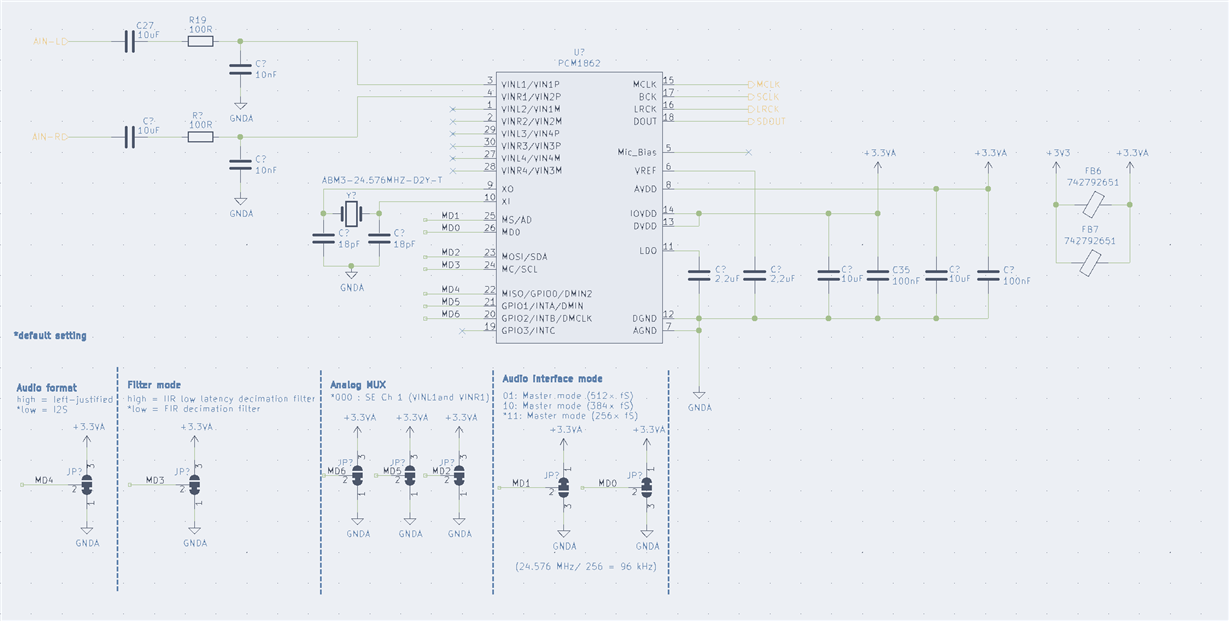Hi,
I am looking for a good Audio ADC with 96KHz and 24 Bit res, it must not be High-End in order to fit the costs. We need the I2S ADC to be linux compatible means, to have linux driver and devicetree setup instruction.
Any help is highly appriciated.
Bes regards,
Nils






